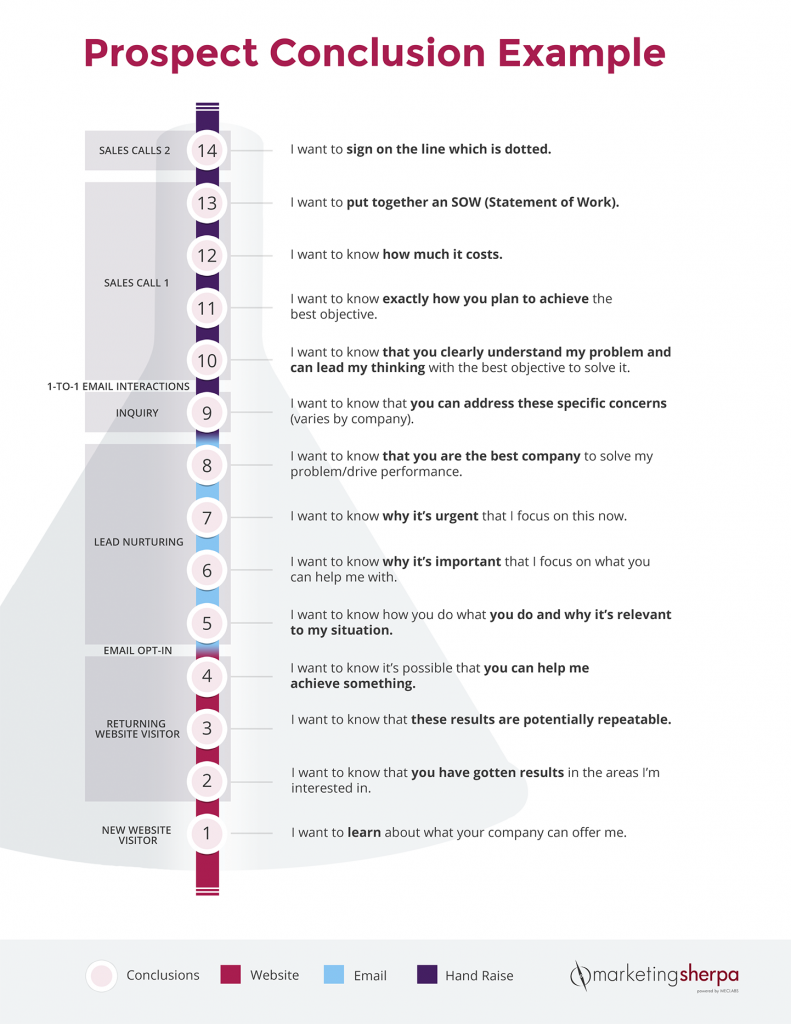A recent MarketingSherpa Blog post, “Content Marketing: Interviewing internal resources,” covered one technique for including internal resources in your content marketing. This post features sources who each discuss an array of quick-hit tips on the topic.
Content marketing is major piece of any digital marketing strategy, particularly for B2B marketers. This content – in the form of blog posts, white papers, e-books, infographics, videos, podcasts and more – can be created by the marketing team and can also come from third-party experts.
Utilizing the knowledge of experts, such as developers or engineers, within the enterprise is another resource for content marketing. The challenge is taking advantage of those internal resources.
Simply interviewing those resources is one way to tap into their knowledge, and we covered that tactic in the earlier blog post.
Here are three of your peers in content marketing sharing their lists of tips and ideas to kick start the process of making use of your internal resources.
Tricia Heinrich, Senior Director of Strategic Communications, ON24, explained a number of tactics used at the webcasting technology company:
1. The primary challenge faced when working with internal personnel to develop marketing content is getting needed information from colleagues who are already too busy with their own day-to-day responsibilities. They see the value in marketing, but it is not their primary focus. Overcoming this challenge requires a combination of incentive, persuasion and simplification across all levels and roles.
2. A top-down approach is helpful – if the CEO or CMO mandates that everyone (or certain people) take a more active role in marketing their company and asks to see results, employees will be more accountable and likely to take part.
3. Critical to the success of ON24’s marketing and communications program is customer involvement, and key to recruiting quotable, positive customers is enlisting the assistance of our sales reps.
4. To encourage their participation in the program, we incentivize sales reps by providing a special bonus for customer media interviews, press releases and case studies.
5. Another strategy for successfully involving sales reps in ON24’s marketing and communications program is ON24’s annual customer awards program. Leveraging their relationships, sales reps publicize the program to their customers, recognizing that the program creates good will between ON24 and the customer. The customers who win an award are more likely to participate in the generation of marketing content.
6. To encourage blog posts and bylines by internal contributors, including the executive team, we try to minimize any extra work involved by repurposing content across channels.
7. For example, a presenter in one of our webinars will write a blog post based on his webinar presentation, and the blog post will then be promoted across social channels.
8. Bylined articles are also promoted socially when published – and are often posted on the blog or rewritten for the blog.
9. We also encourage colleagues to write about what they are passionate about. For example, our CEO Sharat Sharan sees the importance of communicating effectively in the workplace and emerging marketing trends. As a result, he has written pieces for The Economist and The Huffington Post on these topics.
Jeff Klingberg, President and CEO, Mountain Stream Group, offered tips with a focus on gaining knowledge from engineers:
This topic was discussed at great length in LinkedIn’s B2B Technology Marketing Community.
Issue #1. Time
Small companies (50 employees) are typically working with a skeleton workforce and everyone is wearing multiple hats. Even larger companies are facing downsized workforces since the “Great Recession.” Finding time in a busy workday to create content while fulfilling the day-to-day responsibilities to satisfy client needs can be challenging, especially in the engineering department.
Issue #2. Subject-matter experts
In manufacturing companies, the retirement of engineers has driven them to take a different track in meeting engineering department needs. Many companies are hiring CAD operators (designers) on a contract basis instead of hiring engineers. Therefore, they don’t have a lot of subject-matter experts available to create content.
Issue #3. Fear
Engineers, by nature, are not good communicators, so fear sets in when asked to create documents beyond the typical CAD drawing or manuals.
Issue #4. What type of content to create
Smaller companies typically don’t have a deep understanding of their customer personas, pain points and what customers’ purchasing influencers and specifiers are looking for in content. Also, you have to define what content is.
For example, 52% of engineers expect a supplier to have downloadable CAD drawings in order to consider doing business with that company, however, only about one-fourth of manufacturers have CAD drawings on their websites. And engineers are looking for 3D models to help them reduce time to market.
I know one company who has taken a novel approach to the 3D model issue. If their current suppliers don’t have 3D models, they have offered to create the 3D models for the supplier in return for product.
Ultimately, content creation is a team effort. Its importance has to start at the chief executive. Marketing personnel have to make it easy for subject-matter experts by providing research on subject and content needs, put questions together to help the SMEs create content or pull together information that Marketing can then [use to] create content.
Read more…










